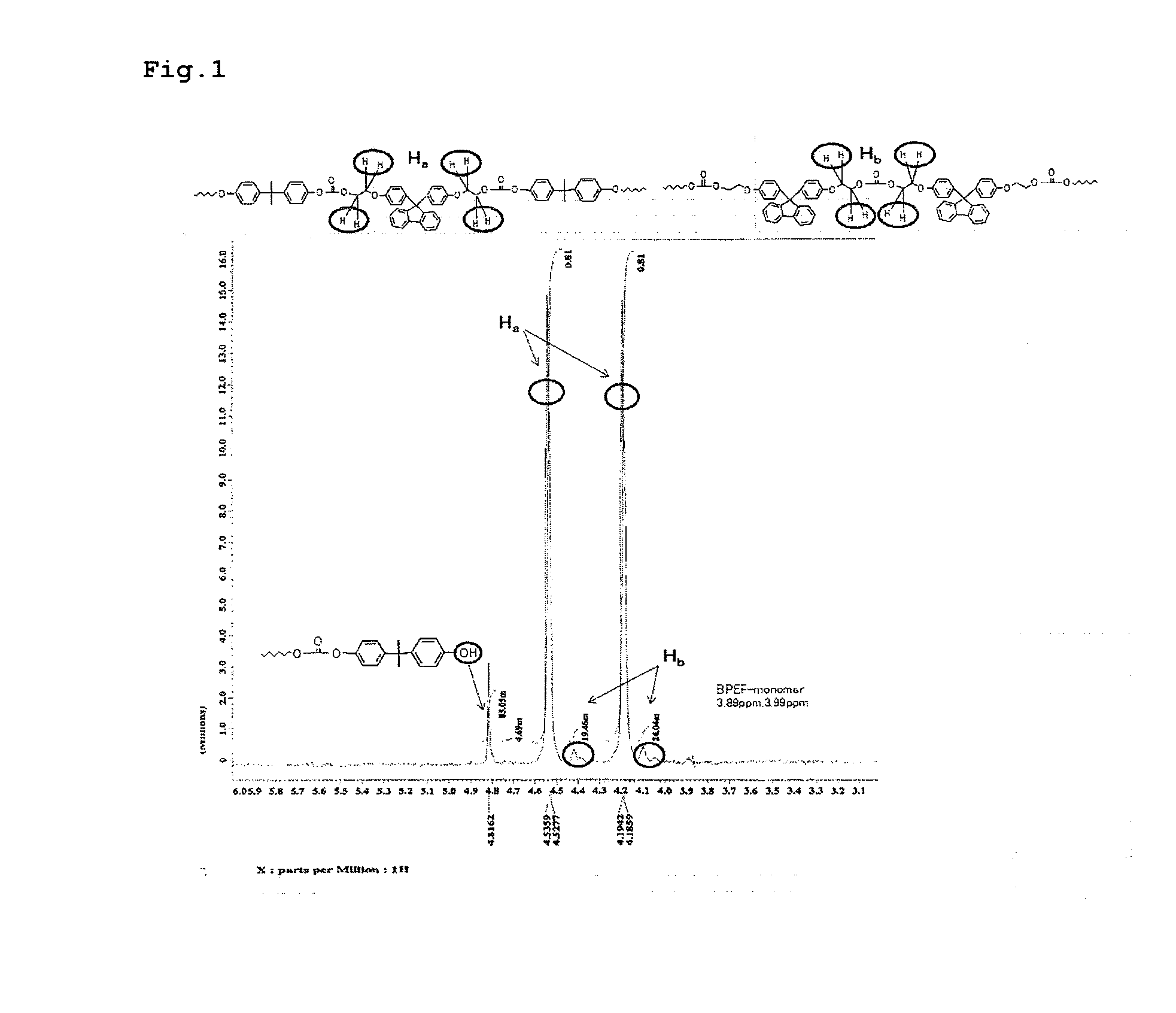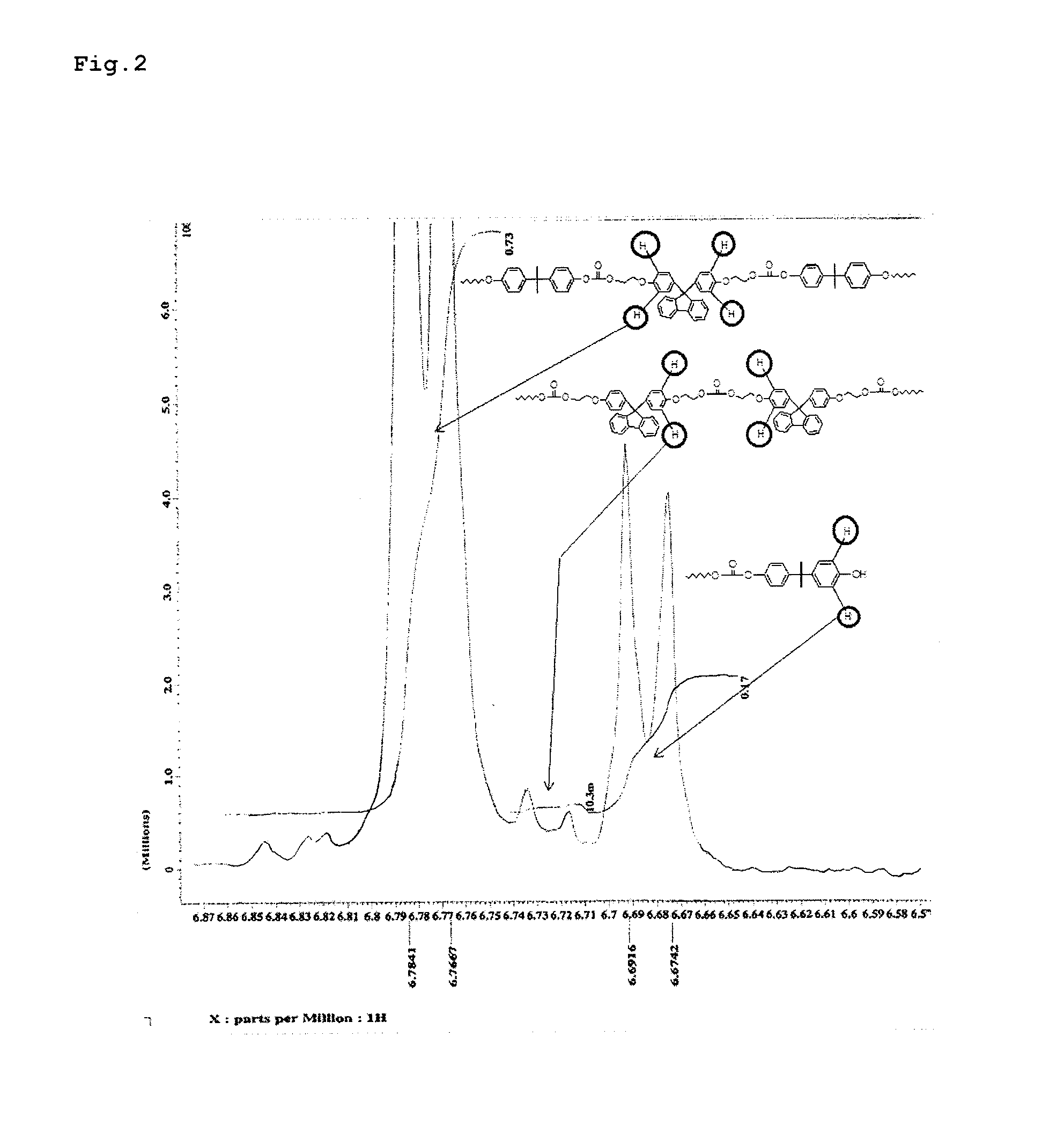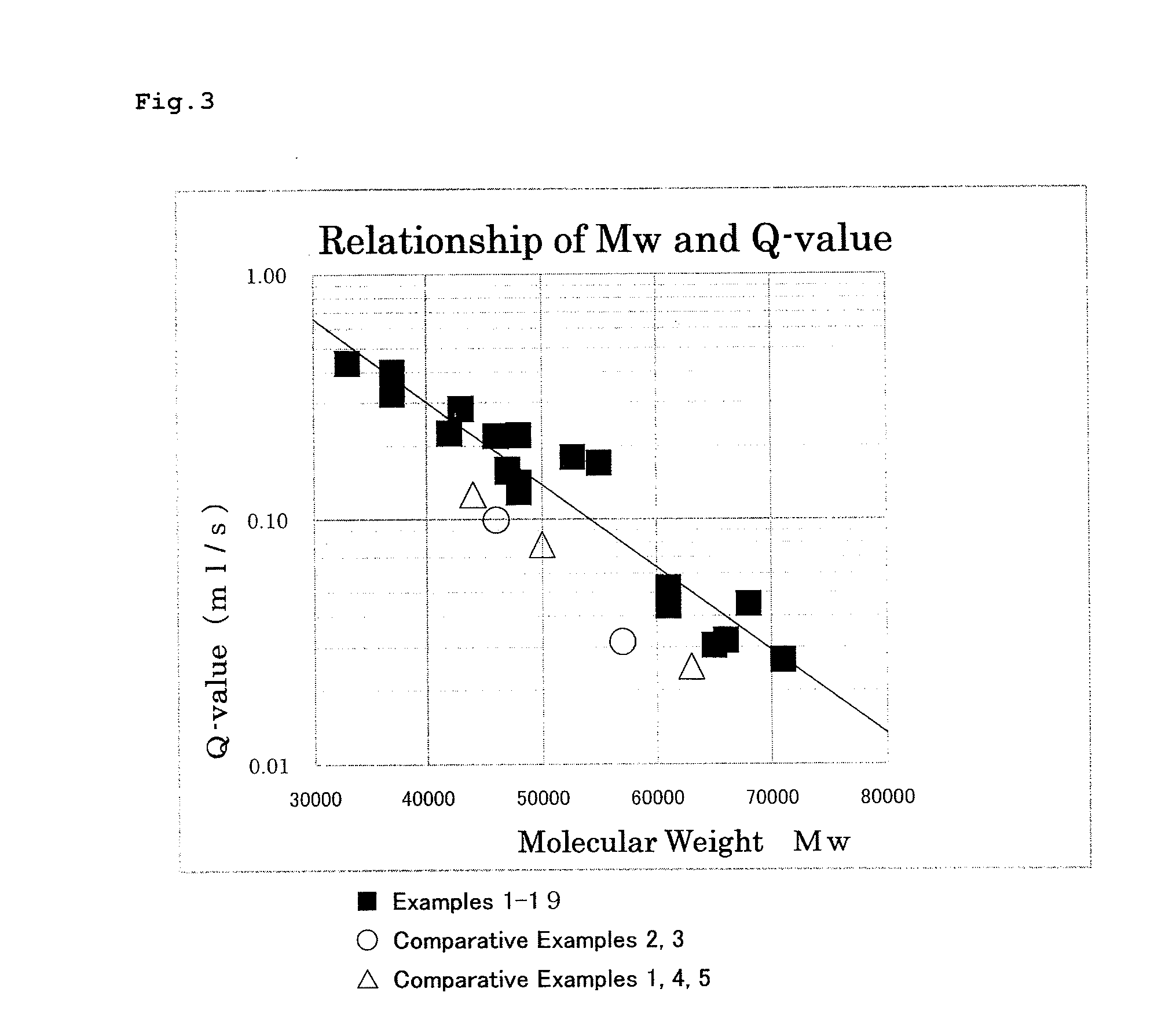High-fluidity polycarbonate copolymer, process for production highly polymerized aromatic polycarbonate resin and aromatic polycarbonate compound (as amended)
a polycarbonate, high-fluidity technology, applied in the field of high-fluidity polycarbonate copolymer, can solve the problems of difficult to increase the polymerization degree, the method disclosed in the above documents, and the reaction rate is extremely low, so as to improve the fluidity, improve the reaction rate, and the effect of high molecular weigh
- Summary
- Abstract
- Description
- Claims
- Application Information
AI Technical Summary
Benefits of technology
Problems solved by technology
Method used
Image
Examples
examples 2-3
[0602]The experiments were carried out in the same manner as in Example 1 except for using the aliphatic diol compounds and the amount used as shown in Table 1.
Example of Production of Prepolymer 1; PP-A
[0603]10,000 g (43.80 mol) of 2,2-bis(4-hydroxyphenyl)propane, 10,588 g (49.39 mol) of diphenyl carbonate and 1 μmol / mol of sodium hydrogen carbonate as a catalyst were charged into a 50-liter SUS316 reactor equipped with a stirrer and a distiller, and the air in the reactor was substituted with nitrogen. The amount of catalyst was calculated as the number of moles based upon the amount of 2,2-bis(4-hydroxyphenyl)propane.
[0604]The degree of pressure reduction was adjusted to 27 kPaA (200 torr) and the starting materials were heated and melted at 200° C. with stirring for 30 minutes.
[0605]Subsequently, a transesterification reaction was carried out for 4 hours while condensing phenol distilled from the reaction system in a cooling tube and removing, keeping the internal temperature at...
example 4
[0618]10 g of the aromatic polycarbonate prepolymer PP-A which was obtained by the above-mentioned Example of Production of Prepolymer 1 was charged into a four-neck flask of 300 cc equipped with a stirrer and a distiller and was heated and melted under vacuum at 280° C.
[0619]Subsequently, 0.33 g of 9,9-bis[4-(2-hydroxyethoxy)phenyl]fluorene (BPEF) which was the aliphatic diol compound was charged therein, and the mixture was stirred and kneaded for 60 minutes at a jacket temperature of 280° C. under reduced pressure of 0.04 kPaA (0.3 torr) to carry out a transesterification reaction. Regarding the catalyst, the polymerization catalyst which had been used in the process of preparing the aromatic polycarbonate prepolymer was continuously used directly.
[0620]Phenol distilled from the reaction system was condensed in a cooling tube to remove away to obtain a polycarbonate copolymer having the weight average molecular weight (Mw) of 37,000, Q-value of 0.400, the content of the polymer m...
example 5-15
[0621]The experiments were carried out in the same manner as in Example 4 except for using the aromatic polycarbonate prepolymers and the aliphatic diol compounds as shown in Table 3. In the case of using PP-C, 1 μmol / mol of sodium hydrogen carbonate was added as a catalyst, wherein the amount of catalyst was calculated as the number of moles based upon the amount of 2,2-bis(4-hydroxyphenyl)propane unit. The results were shown in Table 3.
PUM
| Property | Measurement | Unit |
|---|---|---|
| Temperature | aaaaa | aaaaa |
| Temperature | aaaaa | aaaaa |
| Weight | aaaaa | aaaaa |
Abstract
Description
Claims
Application Information
 Login to View More
Login to View More - R&D
- Intellectual Property
- Life Sciences
- Materials
- Tech Scout
- Unparalleled Data Quality
- Higher Quality Content
- 60% Fewer Hallucinations
Browse by: Latest US Patents, China's latest patents, Technical Efficacy Thesaurus, Application Domain, Technology Topic, Popular Technical Reports.
© 2025 PatSnap. All rights reserved.Legal|Privacy policy|Modern Slavery Act Transparency Statement|Sitemap|About US| Contact US: help@patsnap.com



